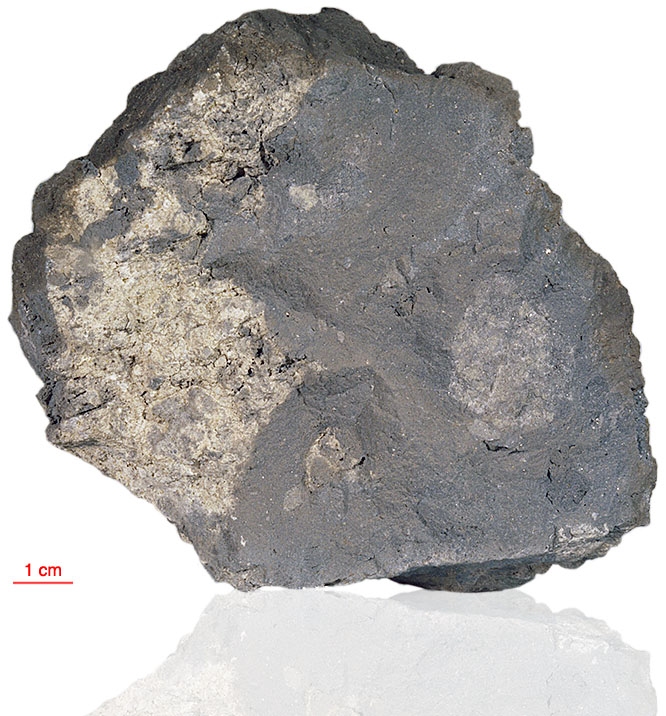
Fact sheet
76315 is a micropoikilitic impact melt breccia whose matrix has finely-divided flow banding. The modal mineralogy of the matrix is about 50% plagioclase and 40% low-Ca pyroxene with minor amounts of augite, olivine, ilmenite, armalcolite and metallic iron. Clasts seen in 20 thin sections include poikilitic 70-80% plagioclase fragments, granulitic 70-80% plagioclase fragments, crushed feldspar or anorthositic fragments (rotation 1), intersertal plagioclase-pyroxene-olivine fragments, crushed spinel-olivine fragments, crushed troctolite fragments and aphanitic feldspathic fragments. Surprisingly, in our thin section there is an almost perfectly euhedral pyroxene clast (rotation 2).
The sample weighed 671 grams before analysis and has been broadly dated at 3.9 billion years (Ar/Ar).
Further details of this and other Apollo samples are here: http://curator.jsc.nasa.gov/lunar/
Apollo 17, the final manned landing mission, had two objectives: to obtain samples of ancient rocks from the lunar highlands and to look for evidence of younger volcanic activity on the valley floor.
This small Collection contains material deriving from both periods, including igneous rocks around 4.3 billion years old from the lunar highlands as well as younger volcanic samples dating from about 3.6 billion years ago.
Apollo 17 was launched on 7 December 1972.






